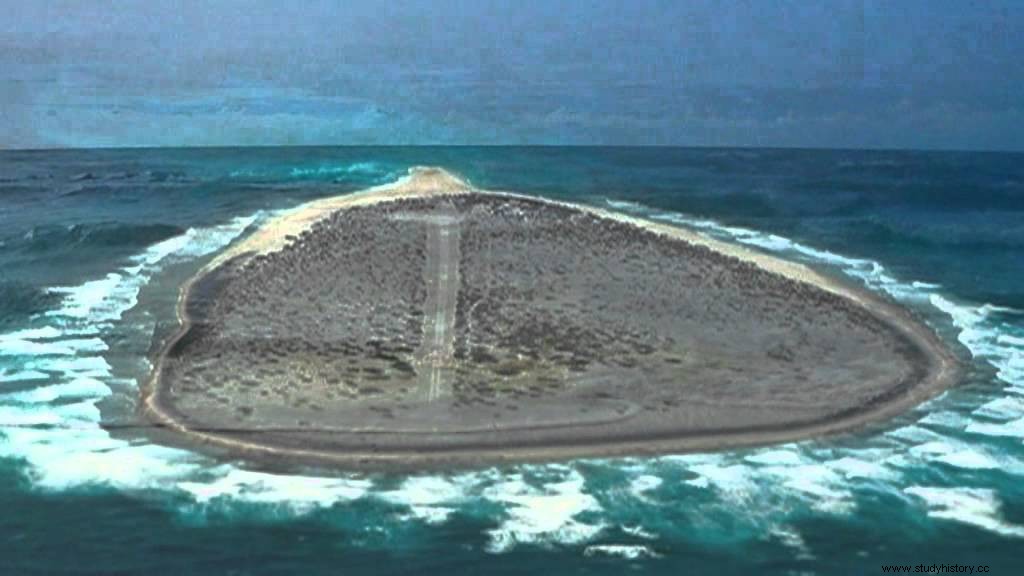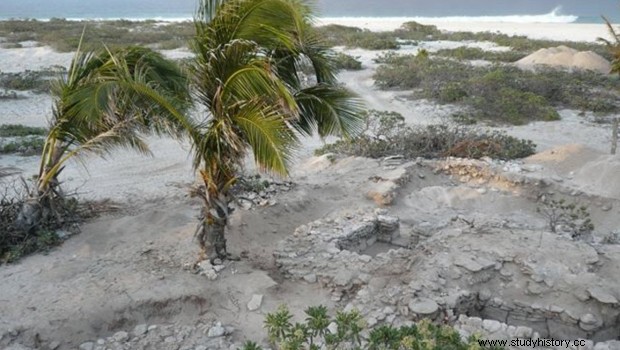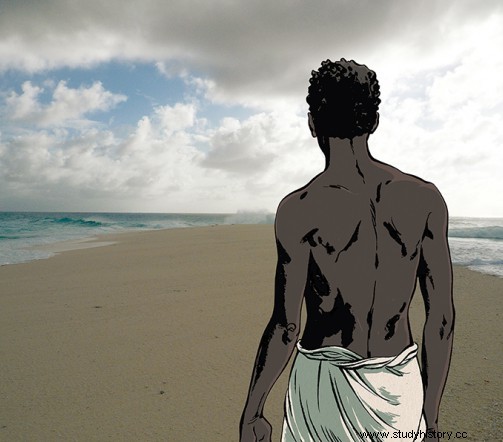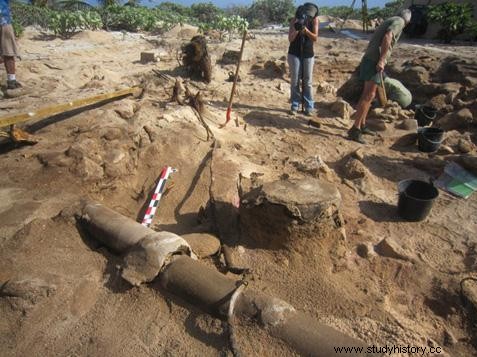L’Ile du Sable (Isla de la Arena) is a small islet of 0.8 square km in the Indian Ocean, more than 300 kilometers from Madagascar, the nearest mainland. She was the protagonist of a miserable story. In the words of Max Guérout , a marine archaeologist and former French naval officer, who led a 2007 UNESCO-sponsored investigation of the island
It is a very human story, a story of ingenuity and the survival instinct of people who were abandoned because they were considered by some to be less than human.

Tromelin today
In 1761, the French ship Utine it ran aground on the coral reefs that surrounded the islet and the strong waves destroyed it. Aboard the Utine There were 150 slaves and a crew of just over 20 officers and sailors. Two sailors and about 90 slaves who were trapped in the hold lost their lives in the shipwreck. The survivors managed to recover some barrels of water and food, as well as various tools from the ship that allowed them to light a fire, build a shelter and dig a well. Despite everything, the differences were still maintained and the slaves barely had food and water.

After six months, they built a log raft with a small sail that allowed them to leave the island... but only the whites . They left some provisions for the slaves and left with the promise of returning with help. When they arrived in Mauritius, they asked the governor of the island for the promised help, but he decided that it was not worth the risk of losing another ship for a few slaves. About 60 slaves were forgotten for 15 years . In 1776, a French warship commanded by Captain Tromelin he arrived at the island where he found seven women, who had survived for 15 years, and an eight-month-old baby. Tromelin took them to Mauritius where they were granted their freedom. From that moment, and in recognition of the humanity of the captain, that islet bears the name of Tromelin.

The 2007 archaeological investigation found that, during the 15 years of isolation on the island, the slaves had managed to survive by maintaining the fire they had lit upon arrival - felling almost all of the trees and bushes; in fact, today it is an almost desert island - and feeding on turtles, birds and fish. They also found remains of house walls built from blocks of coral and compacted sand, as well as remains of a communal oven and copper tools. Regarding water, they managed to survive with what they could obtain from the rain and what was provided by the well dug by the sailors.

Originally Posted in Control Session
